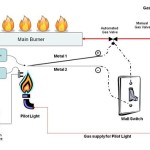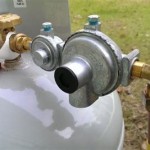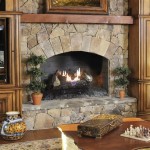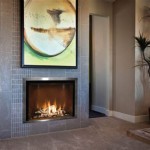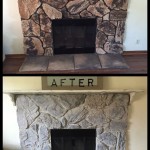Making a Fireplace Mantel: A Comprehensive Guide
A fireplace mantel serves as a focal point in a room, adding character and providing a surface for decorative displays. Constructing a fireplace mantel is a woodworking project that can range from a simple shelf to an elaborate centerpiece. This article provides a detailed guide to the process, covering design considerations, material selection, construction techniques, and installation procedures.
The first step in creating a fireplace mantel is careful planning. This involves taking precise measurements, considering the desired aesthetic, and understanding local building codes related to fireplace clearances. Accuracy in these initial steps is crucial for ensuring a successful and safe installation.
Planning and Design Considerations
Before commencing any physical work, a comprehensive design plan is essential. This plan should include detailed drawings with accurate dimensions. The dimensions are governed by the size of the fireplace opening, the overall proportions of the room, and any existing architectural features. A mantel that is too large can overwhelm the space, while one that is too small can appear insignificant.
The design plan should also specify the style of the mantel. Mantels can range from rustic and traditional to modern and minimalist. The chosen style should complement the overall design of the room and the style of the fireplace itself. Consider factors such as the presence of corbels, moldings, and other decorative elements.
Local building codes often dictate the minimum clearance required between the top of the fireplace opening and the bottom of the mantel. These codes are in place to prevent the mantel from overheating and potentially causing a fire. Consult local regulations to ensure compliance.
Determining the desired depth of the mantel is another important consideration. A deeper mantel provides more surface area for displaying items, but it can also protrude further into the room. The depth should be proportionate to the size of the room and the overall design aesthetic.
Consider the weight of the items that will be placed on the mantel. This will influence the choice of materials and the construction techniques used to ensure adequate support.
Material Selection
The choice of materials for a fireplace mantel significantly impacts its appearance, durability, and cost. Common materials include wood, stone, and metal, each offering distinct advantages and disadvantages.
Wood is a popular choice due to its versatility and availability. Various wood species, such as pine, oak, and maple, can be used, each offering different grain patterns and levels of hardness. Softwoods like pine are easier to work with but may be more prone to dents and scratches. Hardwoods like oak and maple are more durable but can be more challenging to cut and shape.
Reclaimed wood is an increasingly popular option, offering a unique aesthetic and a sustainable choice. Reclaimed wood often has character marks and imperfections that add to its charm. However, it is important to ensure that reclaimed wood is properly treated to prevent insect infestation or rot.
Stone mantels offer a more substantial and durable option. Stone can be used in its natural form or fabricated into specific shapes and sizes. Granite, marble, and limestone are common choices for stone mantels. Stone mantels are generally more expensive than wood mantels and require specialized installation techniques due to their weight.
Metal mantels offer a modern and industrial aesthetic. Steel, iron, and aluminum are common choices for metal mantels. Metal mantels can be powder-coated or painted to achieve a desired finish. Metal mantels are typically fabricated by professionals and require specialized welding and fabrication skills.
When selecting materials, consider the overall design aesthetic, the budget, and the level of skill required to work with the chosen materials. It may be beneficial to consult with a professional woodworker or contractor to discuss the options and determine the best choice for a specific project.
Construction Techniques
The construction techniques used to build a fireplace mantel depend on the design, materials, and desired level of craftsmanship. The following sections outline some common construction techniques for wood mantels, which are often the most accessible for DIY enthusiasts.
For a simple shelf-style mantel, the construction process involves cutting the wood to the desired dimensions and then assembling the pieces using screws or nails. It is important to use wood glue in conjunction with fasteners to create a strong and durable bond. Clamps should be used to hold the pieces together while the glue dries.
For more complex mantels with corbels or moldings, more advanced woodworking techniques are required. Corbels can be carved from solid wood or constructed from multiple pieces of wood that are glued and screwed together. Moldings can be purchased pre-made or custom-milled to match the desired design. These elements are typically attached to the mantel using wood glue and small nails.
Pocket screws are a useful technique for creating strong and concealed joints. Pocket screws are driven at an angle into pre-drilled holes, allowing the pieces to be joined without visible screw heads. This technique is particularly useful for assembling the frame of the mantel.
When constructing a mantel from multiple pieces of wood, it is important to consider the grain direction of the wood. Aligning the grain direction can help to minimize warping and cracking over time. Proper sanding and finishing are essential for achieving a smooth and professional-looking finish. Start with coarse sandpaper and gradually progress to finer grits to remove any imperfections.
Consider using a router to create decorative edges or profiles on the mantel. A router can be used to create rounded edges, beveled edges, or more elaborate profiles. Practice using a router on scrap wood before applying it to the mantel to ensure a clean and consistent result.
Installation Process
The installation process is critical for ensuring the safety and stability of the fireplace mantel. The mantel must be securely attached to the wall and positioned at the correct height above the fireplace opening.
Before installation, locate the wall studs behind the wall surface. Wall studs provide a solid anchor point for attaching the mantel. A stud finder can be used to locate the studs. Mark the location of the studs on the wall.
For a simple shelf-style mantel, screw a ledger board to the wall, aligning it with the studs. The ledger board provides additional support for the mantel. The mantel can then be attached to the ledger board using screws or nails. Ensure that the fasteners are long enough to penetrate the studs securely.
For heavier mantels, it may be necessary to use additional support brackets. These brackets can be attached to the wall studs and provide extra support for the weight of the mantel. The brackets should be concealed behind the mantel to maintain a clean appearance.
Use shims to level the mantel during installation. Shims can be inserted between the mantel and the wall to correct any unevenness. Once the mantel is level, tighten the fasteners to secure it in place.
After installation, caulk any gaps between the mantel and the wall. Caulk helps to seal the gaps and prevent drafts. Choose a caulk that is paintable so that it can be matched to the color of the wall.
Consider the placement of electrical outlets or wiring that may be located behind the mantel. Ensure that the mantel does not obstruct access to these electrical components. It may be necessary to relocate the outlets or wiring before installing the mantel.
Regularly inspect the fireplace mantel for any signs of damage or instability. Tighten any loose fasteners and repair any cracks or chips as needed. Proper maintenance will help to ensure the longevity and safety of the mantel.
When dealing with combustible materials near a heat source, prioritize safety. Maintaining proper clearances and following building codes are paramount to prevent fire hazards. If unsure about any aspect of the installation process, consult with a qualified professional.

How To Make An Easy Diy Fireplace Mantel Sprucing Up Mamahood

Diy Fireplace Mantel Designatedspacedesign Com

Easy Diy Fireplace Mantel Tutorial Jessica Welling Interiors

Build A Fireplace Mantel

Diy Fireplace Mantel The Idea Room

How To Build A Fireplace Mantel Easy Diy Blossoming Life

How To Build Fireplace Mantel 102 Part 5 Make The Hood Joy Of Moldings

Easy Fireplace Mantel Diy

Diy Wood Beam Mantel

Building Our Fireplace The Diy Mantel House Mommy
Related Posts

